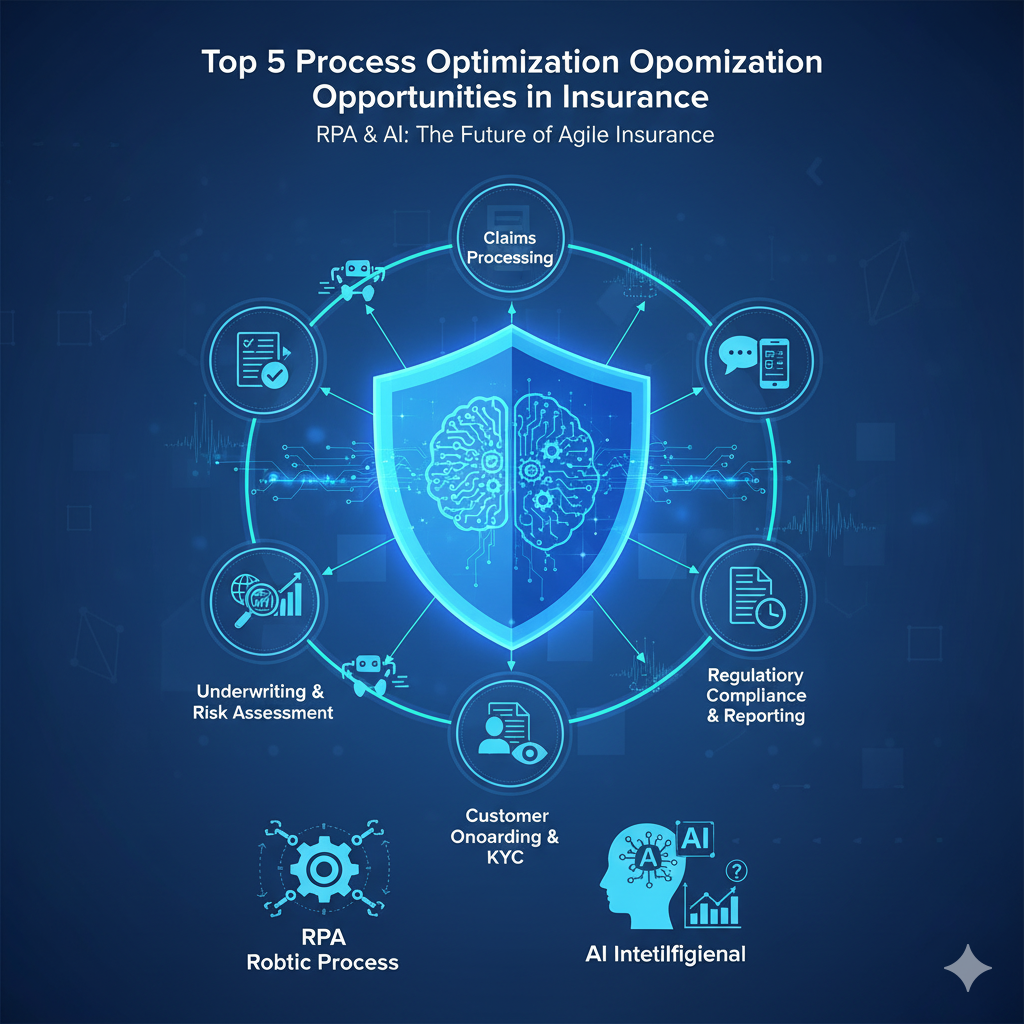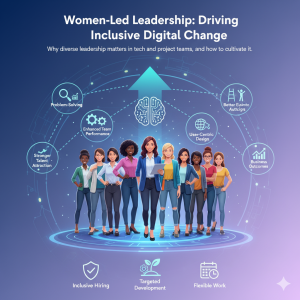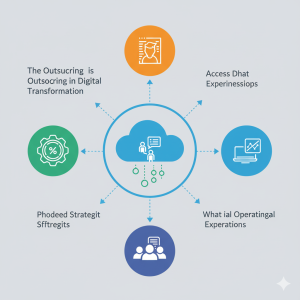The insurance industry, a cornerstone of financial security, is undergoing a seismic shift. While built on tradition and trust, it’s also grappling with legacy systems, complex manual processes, and the escalating demands of a digital-native customer base. In this environment, process optimization isn’t just about cutting costs; it’s about enhancing customer experience, improving accuracy, and driving innovation.
Technologies like Robotic Process Automation (RPA) and Artificial Intelligence (AI) are proving to be powerful allies in this quest, targeting common inefficiencies across the insurance value chain. Let’s dive into five key areas ripe for transformation.
- Claims Processing
The Challenge: Claims processing is often the most critical touchpoint for a customer, yet it’s frequently burdened by manual data entry, document verification, inconsistent adjudication, and lengthy turnaround times. This leads to frustrated customers, higher operational costs, and potential for errors.
The Optimization Opportunity:
RPA: Bots can automate the ingestion of claims documents (email, portals), extract relevant data from various formats (structured and unstructured) using OCR/ICR, validate information against policy details, and even initiate payments for straightforward claims.
AI (Machine Learning & NLP): AI can analyze claim severity, detect fraudulent patterns by flagging anomalies, and leverage Natural Language Processing (NLP) to understand complex claim narratives from free-text fields. This accelerates adjudication and improves decision-making accuracy.
Results: Faster claims resolution, reduced manual effort, higher fraud detection rates, and a significantly improved customer experience during a stressful time. - Underwriting and Risk Assessment
The Challenge: Underwriting is data-intensive and requires extensive analysis of diverse information sources – from credit scores and medical records to property data and driving history. This manual aggregation and assessment can be time-consuming, prone to human bias, and delay policy issuance.
The Optimization Opportunity:
RPA: Bots can gather data from multiple internal and external systems (APIs, websites, databases), compile comprehensive risk profiles, and perform initial eligibility checks based on predefined rules. They can also automate the creation of quotes.
AI (Machine Learning): AI models can analyze vast datasets to identify subtle risk correlations that human underwriters might miss. They can predict claim likelihood, optimize pricing, and even suggest personalized policy terms. AI-driven risk scoring can drastically reduce underwriting time and improve pricing accuracy.
Results: Accelerated quote generation, more accurate risk pricing, reduced human error, enhanced competitive positioning through faster policy issuance, and a more objective risk assessment process. - Policy Administration & Servicing
The Challenge: Managing policies throughout their lifecycle – from issuance and endorsements to renewals and cancellations – involves numerous administrative tasks, often requiring agents to navigate multiple legacy systems. This can lead to slow service, data discrepancies, and high operational overhead.
The Optimization Opportunity:
RPA: Bots can automate policy issuance after underwriting approval, process endorsement requests (e.g., change of address, vehicle updates), manage renewal notifications, and reconcile data across disparate systems.
AI (Chatbots & NLP): AI-powered chatbots can handle routine customer inquiries (e.g., “What’s my policy number?”, “When is my next payment due?”) through web or mobile interfaces, freeing up human agents for more complex issues. NLP can help categorize and route customer emails to the correct department.
Results: Reduced call center volumes, faster response times for routine inquiries, improved data consistency, and greater efficiency in back-office policy management. - Regulatory Compliance & Reporting
The Challenge: The insurance sector operates under stringent and ever-evolving regulatory frameworks. Generating compliance reports, ensuring data privacy (GDPR, CCPA), and performing regular audits are manual, laborious, and critical processes that carry significant penalties if mishandled.
The Optimization Opportunity:
RPA: Bots can extract, compile, and format data from various sources into required regulatory report templates. They can also monitor systems for adherence to specific data handling rules and flag non-compliance issues.
AI (Machine Learning & NLP): AI can be used to monitor large volumes of regulatory updates, identify those relevant to the insurer’s operations, and suggest necessary policy or process adjustments. NLP can scan internal documents to ensure consistent language and adherence to compliance guidelines.
Results: Enhanced regulatory adherence, reduced risk of penalties, significant time savings in report generation, and improved data privacy controls. - Customer Onboarding & KYC (Know Your Customer)
The Challenge: Bringing new customers on board often involves extensive data collection, identity verification, and documentation processing. This can be a slow, cumbersome experience for the customer and a costly, manual effort for the insurer.
The Optimization Opportunity:
RPA: Bots can automate the transfer of customer data from application forms into core systems, cross-reference data against external databases for KYC checks, and generate initial welcome kits or communications.
AI (Computer Vision & Biometrics): AI-powered tools can verify identity documents (passports, IDs) using computer vision, perform facial recognition for biometric verification, and screen applicants against watchlists.
Results: Significantly faster and smoother customer onboarding, reduced customer drop-off rates, improved compliance with KYC/AML regulations, and lower operational costs associated with manual verification.
The Future is Intelligent Automation
The integration of RPA and AI is no longer a futuristic concept but a present-day necessity for insurers looking to thrive. By intelligently automating these critical processes, insurance companies can move beyond simply cutting costs. They can unlock unprecedented levels of efficiency, enhance customer loyalty through superior service, ensure robust compliance, and free up human talent to focus on strategic thinking, complex problem-solving, and building deeper customer relationships. The path to a more agile, customer-centric, and profitable insurance future is paved with intelligent automation.




